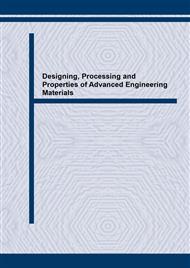p.609
p.613
p.617
p.621
p.625
p.629
p.633
p.637
p.641
Microstructural Evolution and Mechanical Properties of Ultrafine Grained Commercially Pure 1100 Aluminum Alloy Processed by Accumulative Roll-Bonding (ARB)
Abstract:
The ARB process has been carried out up to seven cycles on a commercial purity 1100 aluminum alloy to obtain ultra-fine grains with the average grain size of 500 nm. Microstructural evolution of the ARB processed aluminum alloy was examined by a transmission electron microscopy as a function of accumulated total strain. Mechanical properties including hardness, tensile property, and sliding wear characteristics of the severely deformed Al alloy were also investigated. Grain boundaries of the ARB processed alloy were diffusive and poorly defined after the initial ARB cycles, however they changed to well-defined high angle boundaries with the increase of the accumulated strain. Though hardness and strength of the ARB processed alloy were enhanced significantly, wear resistance of the processed alloy hardly increased. The mechanical properties were discussed in connection with the microstructure.
Info:
Periodical:
Pages:
625-628
Citation:
Online since:
March 2004
Authors:
Price:
Сopyright:
© 2004 Trans Tech Publications Ltd. All Rights Reserved
Share:
Citation:


